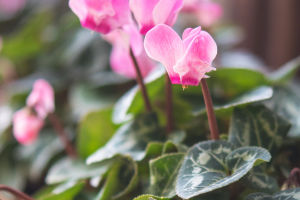The rose, belonging to the genus Rosa within the family Rosaceae, encompasses a wide variety of species and cultivars renowned for their beauty and fragrance.
All roses share a common lineage from this genus, which is characterized by its diversity in form, color, and size, making roses a beloved subject in gardens and floral arrangements worldwide.
The rose, a deciduous shrub renowned for its beauty, features an array of thorny branches and odd-pinnate leaves with 5-9 oval leaflets adorned with marginal thorns. Its flowers, which can be either simple or double, display a palette ranging from purple-red to white, blooming from May to June, with fruits maturing around August to September into oblate or spherical shapes.
The allure of the rose transcends its botanical characteristics, entwining with legends and myths. Among such tales is the story from the Roman Empire era about a breathtakingly beautiful girl named Rodanthe, whose beauty drew numerous fervent suitors. Overwhelmed, Rodanthe sought refuge in the temple of her friend, the goddess Diana. However, Diana, fueled by jealousy and the suitors' insolence in breaking into her temple, transformed Rodanthe into a rose and the suitors into thorns, weaving the fate of the rose with themes of desire and retribution.
Another legend hails from Greek mythology, attributing the creation of the rose to Chloris, the god of flowers. Initially a lifeless seed, the rose was bestowed with beauty by Aphrodite, fragrance by Dionysus, and charm, intelligence, and joy by the three Graces. With Zephyr, the west wind, clearing the clouds and Apollo, the sun god, bestowing his rays, the rose bloomed into existence, earning its title as the Queen of Flowers.
Roses have captivated hearts and imaginations for millennia. Archaeological records indicate their presence in China about 5,000 years ago, marking a long history that intertwines with human civilization. Celebrated for their timeless elegance and profound symbolism, roses remain one of the most cherished and celebrated flowers worldwide.
Whether by the ancient Greeks, Romans, Christians, Freemasons, or otherwise, the rose has always been a timeless symbol of love, beauty, and equality. While each color expresses love, beauty, and balance a little differently, the main message is still love.
Due to its beautiful cultural connotations, roses have been widely considered to be a symbol of love, sympathy, or sadness for hundreds of years. It is respected as the national flower by many countries in the world.


